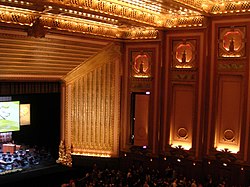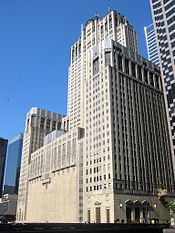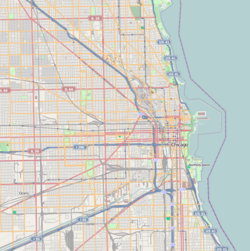
Mary Garden was a Scottish-American operatic lyric soprano, then mezzo-soprano with a substantial career in France and America in the first third of the 20th century. She spent the latter part of her childhood and youth in the United States and eventually became an American citizen, although she lived in France for many years and eventually retired to Scotland, where she spent the last 30 years of her life and died.

Lyric Opera of Chicago is one of the leading opera companies in the United States. It was founded in Chicago in 1954, under the name 'Lyric Theatre of Chicago' by Carol Fox, Nicola Rescigno and Lawrence Kelly, with a season that included Maria Callas's American debut in Norma. The company was re-organized by Fox in 1956 under its present name and, after her 1981 departure, it has continued to be of one of the major opera companies in the United States. The Lyric is housed in a theater and related spaces in the Civic Opera Building. These spaces are now owned by the Lyric.
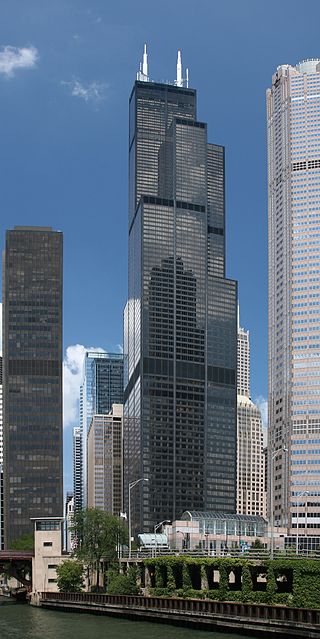
The buildings and architecture of Chicago reflect the city's history and multicultural heritage, featuring prominent buildings in a variety of styles. Most structures downtown were destroyed by the Great Chicago Fire in 1871.
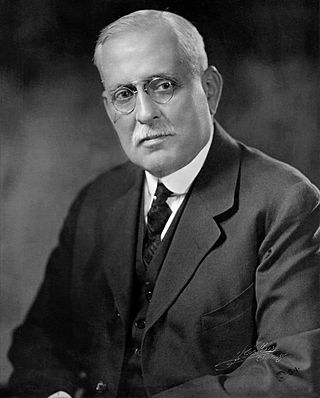
Samuel Insull was a British business magnate. He was an innovator and investor based in Chicago who helped create an integrated electrical infrastructure in the United States. Insull created holding companies that purchased utilities and railroads. Insull was responsible for the building of the Chicago Civic Opera House in 1929. Due to the Great Depression, his vast Midwest holding company empire collapsed, and he was accused of profiting personally by selling worthless stock to unsuspecting investors who trusted him because of his position and reputation. Following a seven-week trial, he and 16 co-defendants were acquitted of all charges after two hours of jury deliberation.

Jules Guérin was an American muralist, architectural delineator, and illustrator. A painter and widely published magazine illustrator, he gained prominence for his architectural work such as in the 1906, Plan for Chicago, and for the large murals he painted in many well-known public structures such as the Lincoln Memorial.

The Joffrey Ballet is an American dance company and training institution in Chicago, Illinois. The Joffrey regularly performs classical and contemporary ballets during its annual performance season at the Civic Opera House, including its annual presentation of The Nutcracker.

The Carbide & Carbon Building is a 37-story, 503 feet (153 m) landmark Art Deco high rise built in 1929, located on Michigan Avenue in Chicago. It is clad in black granite, green and gold terra cotta, with gold leaf and bronze trim. It was converted to a hotel in 2004.

The Auditorium Theatre is a music and performance venue located in the Auditorium Building at 50 E. Ida B. Wells Drive in Chicago, Illinois. Inspired by the Richardsonian Romanesque Style of architect Henry Hobson Richardson, the building was designed by Dankmar Adler and Louis Sullivan and completed in 1889. The Chicago Symphony Orchestra performed in the theatre until 1904 as well as the Chicago Grand Opera Company and its successors the Chicago Opera Association and Chicago Civic Opera until its relocation to the Civic Opera House in 1929. The theater was home to the Joffrey Ballet from 1998 until 2020. It currently hosts a variety of concerts, musicals, performances, and events. Since the 1940s, it has been owned by Roosevelt University and since the 1960s it has been refurbished and managed by an independent non-profit arts organization.

Graham, Anderson, Probst & White (GAP&W) was a Chicago architectural firm that was founded in 1912 as Graham, Burnham & Co. This firm was the successor to D. H. Burnham & Co. through Daniel Burnham's surviving partner, Ernest R. Graham, and Burnham's sons, Hubert Burnham and Daniel Burnham Jr. In 1917, the Burnhams left to form their own practice, which eventually became Burnham Brothers, and Graham and the remaining members of Graham, Burnham & Co. – Graham, (William) Peirce Anderson, Edward Mathias Probst, and Howard Judson White – formed the resulting practice. The firm also employed Victor Andre Matteson.

The Atlanta Opera is an opera company located in the Atlanta metropolitan area. Founded in 1979, it produces mainstage opera productions and arts education programs for Metropolitan Atlanta and the Southeast.
The Civic Opera Company (1922–1931) was a Chicago company that produced seven seasons of grand opera in the Auditorium Theatre from 1922 to 1928, and three seasons at its own Civic Opera House from 1929 to 1931 before falling victim to financial difficulties brought on in part by the Great Depression. The company consisted largely of the remnants of the Chicago Opera Association, a company that produced seven seasons of grand opera in the Auditorium Theatre from 1915 until its bankruptcy in 1921.
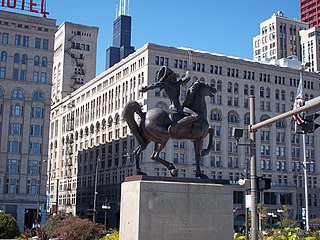
Two grand opera companies in Chicago, Illinois, have gone by the name Chicago Grand Opera Company during the first half of the 20th century. Like many opera ventures in Chicago, both succumbed to financial difficulties within a few years, and it wasn't until 1954 that a lasting company was formed in the city.

The State Line Generating Plant was a coal-fired electrical generating station that operated from 1929 until 2012. It was located on the coast of Lake Michigan, bordering the state line separating Indiana from Illinois but within the corporate limits of Hammond, Indiana. In 2008–09, it had a year-round capacity of 515 megawatts.

The Civic Opera Building is a 45-story office tower located at 20 North Wacker Drive in Chicago. The building opened November 4, 1929, and has an Art Deco interior. It contains a 3,563-seat opera house, the Civic Opera House, which is the second-largest opera auditorium in North America. The opera house is the permanent home of the Lyric Opera of Chicago, and the home of the Joffrey Ballet since 2021.

The Riverside Plaza is considered one of Chicago's finest Art Deco buildings. It was originally known as the Chicago Daily News Building. At the time of its completion in 1929, the Daily News was one of the dominant newspapers in Chicago. The first building in the United States to develop the "air-rights" over railroad tracks, the 26-story building helped revitalize the south central Chicago River from industrial transport to urban office corridor and made innovations in engineering and urban design.
The Chicago Lighting Institute was an educational and marketing association serving the lighting industry in the Midwest. The main aim of the institute was to acquaint architects, interior designers, electrical engineers, urban planners and the general public with the latest developments and applications in lighting. It was the first U.S. institution to promote appropriate use of light in the earlier years of the lighting industry.

Alice D'Hermanoy, born Alice Saintenoy, was a Belgian lyric soprano who sang with the Chicago Civic Opera in the 1920s.
Patrick Carfizzi is an American operatic bass-baritone.
